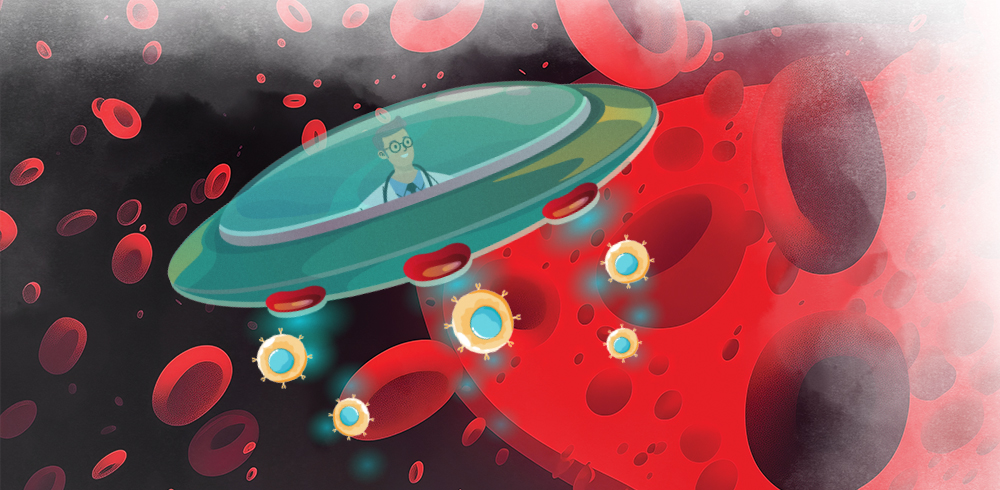Revised ELN criteria improve thrombotic risk stratification in PV: Findings from the PV-ARC study
4 Apr 2025
Share
Polycythemia vera (PV) is a chronic myeloproliferative neoplasm characterized by uncontrolled red blood cell production and a heightened likelihood of thrombosis.1 PV is traditionally classified into low- and high-risk categories, with the latter indicated for cytoreductive therapy, primarily with hydroxyurea (HU).1 The revised European LeukemiaNet (ELN) criteria expands on 6 clinical signs and symptoms (CSSs) to guide the initiation of cytoreductive therapy, yet their impact on thrombotic risk across conventional risk categories remains underexplored.1 This study evaluated the incidence of thrombotic events among patients with PV receiving HU and investigated the role of revised ELN criteria for cytoreductive therapy start (CTS) in identifying high-risk phenotypes.1 Findings from the multicenter PV-ARC study were presented by Dr. Francesca Palandri at the ASH Annual Meeting & Exposition 2024.1
This retrospective analysis included 1,162 patients diagnosed with PV based on WHO 2022 criteria.1 Of these, 739 patients treated with HU were assessed for revised CTS, which was reflective of real-world clinical practice and included persistent/ progressive leukocytosis (100% increase if white blood cells (WBC) 10×109/L at baseline; WBC >15×109/L for at least 3 months), extreme thrombocytosis (platelet >1,000×109/L), progressive splenomegaly (an increase of >5cm from last year pre-HU), inadequate hematocrit (Hct) control (Hct ≥50% for ≥1-year pre-HU) or excessive phlebotomy requirements (≥6 phlebotomy/year for 2 years or intolerant to phlebotomy), relevant cardiovascular risk factors (≥4 following factors: smoking, hypertension, dyslipidemia, diabetes, overweight), and severe itching (score ≥5/10 and/or refractory to medications).1 Thrombosis-free survival (TFS) and incidence rate ratios (IRRs) were calculated, with multivariate Cox regression identifying independent predictors of thrombotic risk.1
Among the HU-treated patients, 18.5% were low-risk (LR: age <60 years, no prior thrombosis), and 81.5% were high-risk (HR-AGE: age >60 years, 70.4%; HR-THRO: prior thrombosis, 29.6%).1 At least 1 CSS was present in 60.4% of the cohort which was more frequently detected in LR patients (69.3%) compared to HR (58.3%).1 CSSs were equally detected in HR-AGE vs. HR-THRO (p=0.32) and between HR-THRO due to age and previous thrombosis history vs. HR-THRO due to previous thrombosis history only (p=0.69).1 Additional reasons for CTS were identified in all LR patients and 71.3% of HR patients, which reflect the revised ELN criteria but with lower intensity thresholds.1 The IRR of thrombotic events during HU treatment was 1.7 per 100 patient-years.1 HR-THRO patients exhibited the highest thrombotic rates (3.0 per 100 patient-years) compared to LR (1.1 per 100 patient-years, p=0.006) and HR-AGE (1.3 per 100 patient-years, p=0.002).1 CSSs were associated with worse TFS across all risk groups, with significantly higher thrombosis rates observed in patients with CSS vs. those without (2.2 vs. 0.7 per 100 patient-years, p<0.001).1 CSSs were associated with worse 10-year TFS outcomes within each risk group: low-risk (with vs. without CSS: 86.4% vs. 100%, p=0.007), HR-AGE (91.4% vs. 97.8%, p=0.003), and HR-THRO (79.5% vs. 88.1%, p=0.02).1 Multivariate analysis identified progressive splenomegaly (HR=6.10; 95% CI: 1.70-21.88; p=0.005), inadequate hematocrit control (HR=2.20; 95% CI: 1.36-3.54; p=0.001) and relevant cardiovascular risk factors (HR=2.56; 95% CI: 1.09-6.00; p=0.03) as predictors of thrombotic risk.1
Revised ELN CSSs effectively stratified patients with PV into distinct thrombotic risk profiles, independent of conventional risk categories.1 These findings underscore the need to integrate CSSs into existing prognostic models to refine treatment strategies.1 Notably, a significant proportion of LR patients required HU due to CSSs, highlighting the necessity for tailored management approaches and further research into long-term outcomes of HU therapy.1
References
- Palandri F, et al. Revised ELN Criteria in Polycythemia Vera Identify an Increased Risk Phenotype for Thrombotic Events Beyond Conventional Risk Stratification: A Multicenter Cooperative Study. Presented at the American Society of Hematology (ASH) Annual Meeting & Exposition 2024; December 7-10, 2024.





